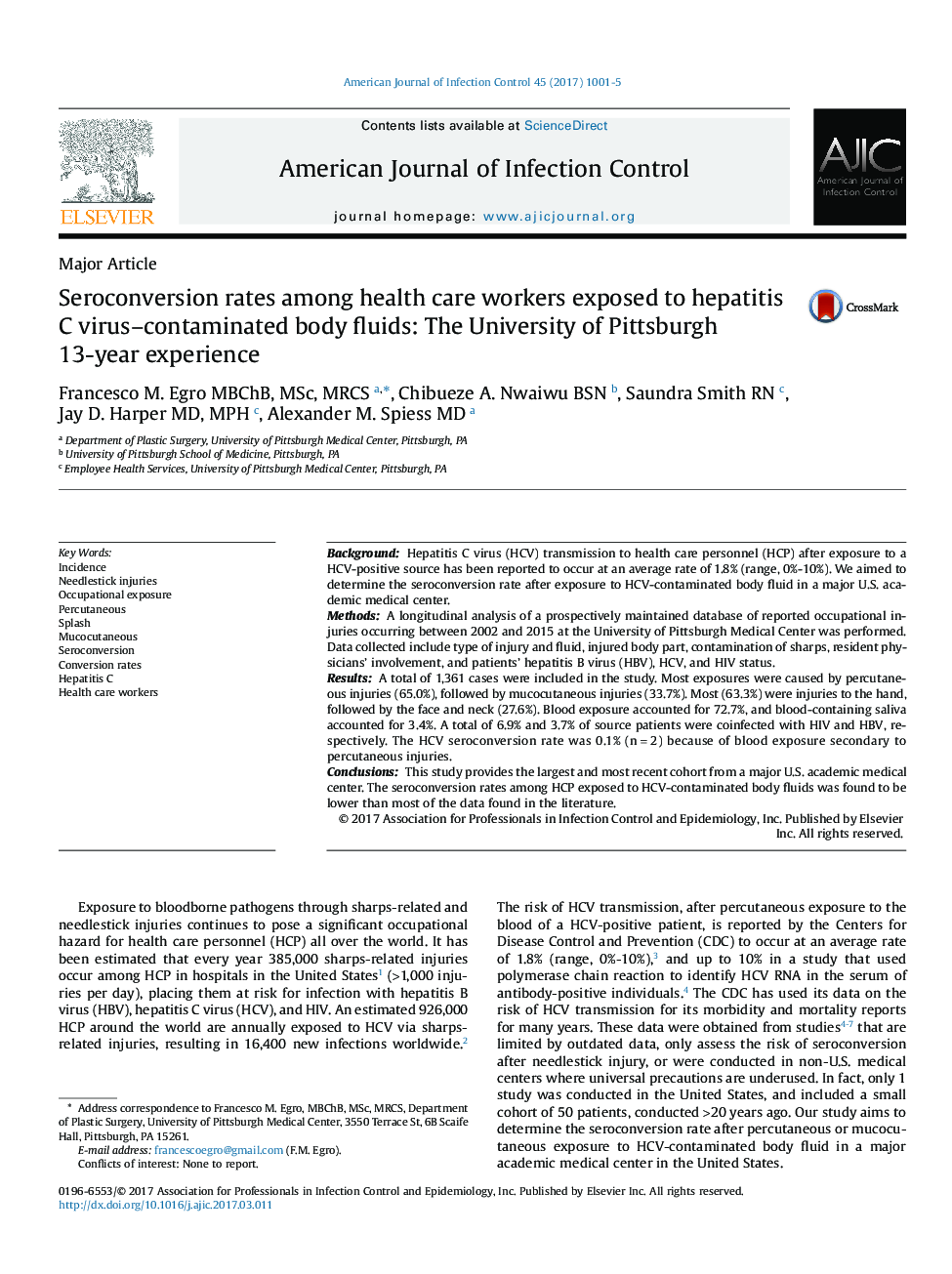| Article ID | Journal | Published Year | Pages | File Type |
|---|---|---|---|---|
| 5566827 | American Journal of Infection Control | 2017 | 5 Pages |
â¢We found an overall seroconversion rate of 0.1% (nâ=â2) after a percutaneous occupational exposure to the blood of hepatitis C virus (HCV)-positive source patients.â¢Our findings support a very low HCV seroconversion rate among health care personnel after an occupational exposure.â¢The overall rate of seroconversion observed in this study is lower than the average rate of 1.8% reported by the Centers for Diseases Control and Prevention and most other studies.
BackgroundHepatitis C virus (HCV) transmission to health care personnel (HCP) after exposure to a HCV-positive source has been reported to occur at an average rate of 1.8% (range, 0%-10%). We aimed to determine the seroconversion rate after exposure to HCV-contaminated body fluid in a major U.S. academic medical center.MethodsA longitudinal analysis of a prospectively maintained database of reported occupational injuries occurring between 2002 and 2015 at the University of Pittsburgh Medical Center was performed. Data collected include type of injury and fluid, injured body part, contamination of sharps, resident physicians' involvement, and patients' hepatitis B virus (HBV), HCV, and HIV status.ResultsA total of 1,361 cases were included in the study. Most exposures were caused by percutaneous injuries (65.0%), followed by mucocutaneous injuries (33.7%). Most (63.3%) were injuries to the hand, followed by the face and neck (27.6%). Blood exposure accounted for 72.7%, and blood-containing saliva accounted for 3.4%. A total of 6.9% and 3.7% of source patients were coinfected with HIV and HBV, respectively. The HCV seroconversion rate was 0.1% (nâ=â2) because of blood exposure secondary to percutaneous injuries.ConclusionsThis study provides the largest and most recent cohort from a major U.S. academic medical center. The seroconversion rates among HCP exposed to HCV-contaminated body fluids was found to be lower than most of the data found in the literature.
